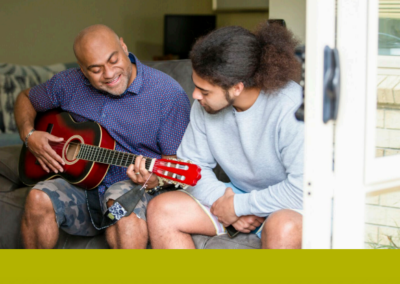The first suite of indicators in this report comprises the five measures identified in the 2012 report to the New Zealand Children’s Commissioner from the Expert Advisory Group on solutions to child poverty: A fixed-line income measure, a moving-line income measure, and measures of material hardship, severe poverty and poverty persistence.1 These measures capture different aspects of child poverty and facilitate monitoring how well efforts to reduce child poverty in New Zealand are working. The second suite of indicators track progress on factors in the health, education, housing and social sectors that relate to the conditions in which children are born, live and grow, which affect their capacity to develop and thrive. These include infant mortality, and measures for children of hospitalisations for medical conditions with a social gradient, assault, neglect and maltreatment, unmet health need, and measures of education. Housing measures have been expanded in this report. The third suite of indicators has examples from the New Zealand social and economic environment as the context to the specific child-related issues. It includes measures of income inequality, and data on unemployment and under utilisation.

The housing section from the 2016 technical report shows the following:
- From Census data from 1986 to 2013:
- The percentage of New Zealanders living in owner occupied dwellings fell while the percentage of people renting rose. These changes occurred at a faster rate for Māori and Pacific peoples than for European and Asian ethnic groups.
- The percentage of people living in rented accommodation with a private sector landlord increased at each Census while there was a decrease in the percentage of people who occupied Housing New Zealand Corporation or othersocial sector housing.
- Low and middle-income New Zealand households are more likely than high income households to spend more than 30% of their income on housing costs.
- In 2015, 43% of those in the lowest income quintile were spending more than 30% of their income on housing costs compared with 9% of households in the highest income quintile.
- Over half of accommodation supplement recipients in rental accommodation were paying over 50% of their income on housing costs.
- In the 2013–2015 NZHES years 0–17 year olds were more likely than persons in the general New Zealand population to live in crowded households (that is houses with a need for one or more bedrooms).
- The percentage of 0–17 year olds living in crowded Housing New Zealand Corporation (HNZC) and other social housing was 38% compared with 17%in private rental housing and 7% in owner-occupied homes.
- Major problems with housing quality and being forced to put up with feeling cold to save costs were also experienced by a higher percentage of 0–17 year olds than the general population.
- Major problems with dampness and mould were experienced by 34% of 0–17 year olds in households in the lowest income quintile compared with 1% in the highest income quintile.
- Major difficulties heating and keeping homes warm in winter were experienced by 21% of 0–17 year olds in households in the lowest income quintile compared with 2% in the highest income quintile.
- Frequently being forced to put up with being cold to keep costsdown was experienced by 22% of 0–17 year olds in households in the lowest income quintile compared with 1% in the highest income quintile. Almost all children (86%) who were forced to put up with feeling cold a lot to keep household costs down lived in households with the highest levels of material hardship.
- If New Zealand meets the Sustainable Development Goal 11 target of ensuring access to adequate, safe and affordable housing for all people it will mean fewer than 10% of 0–17 year olds living in crowded households and no more than 1-2% of 0–17 year olds living in damp, mouldy, hard-to-heat homes, or being forced to put up with feeling cold to save costs.
Go here to see more

